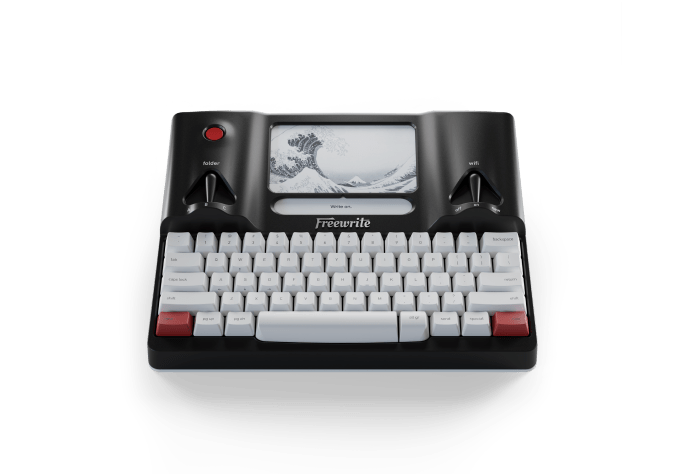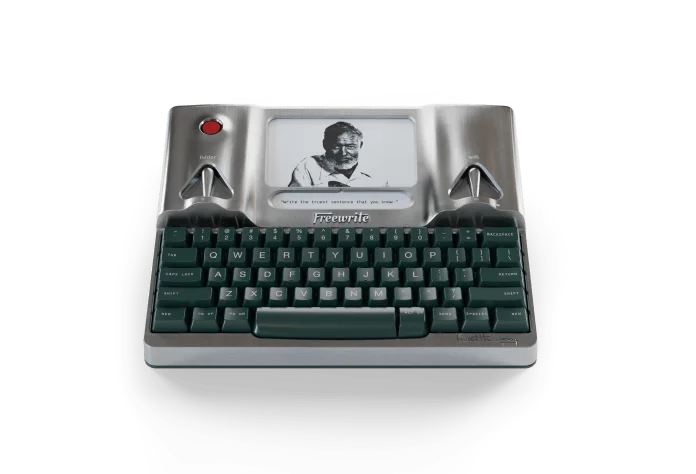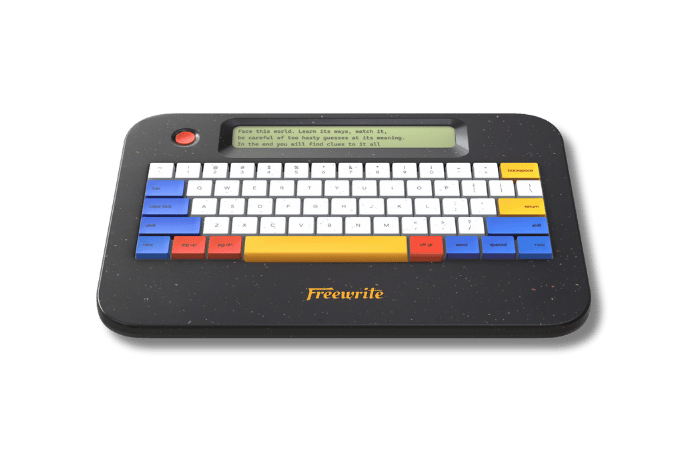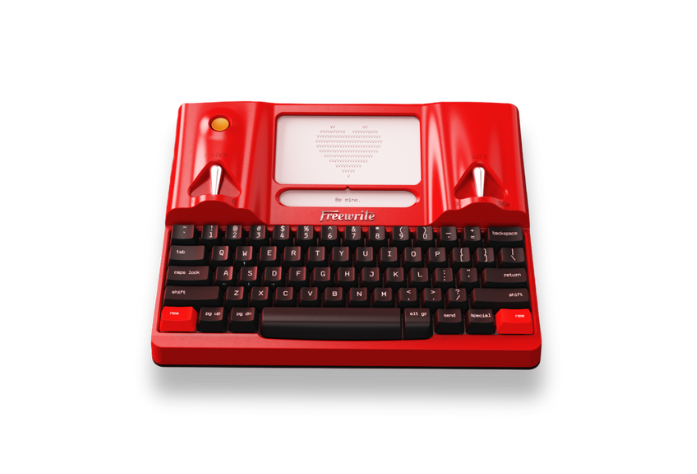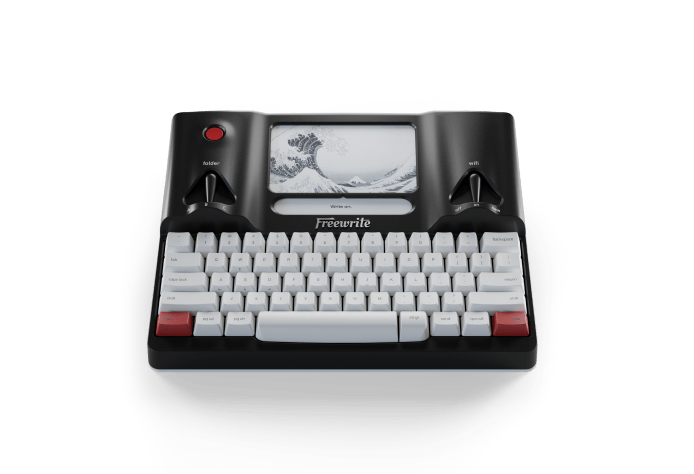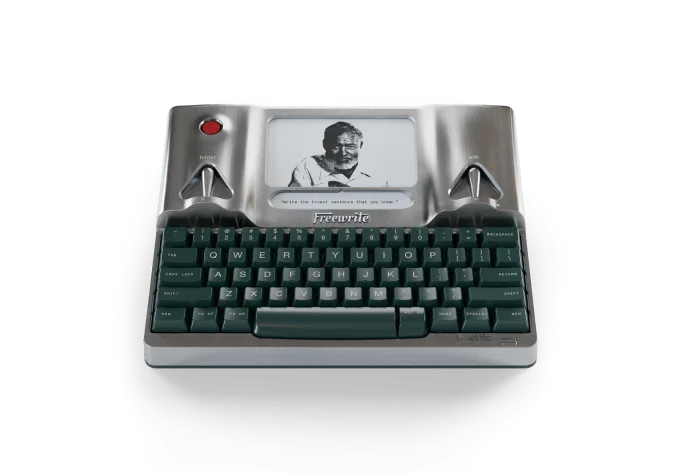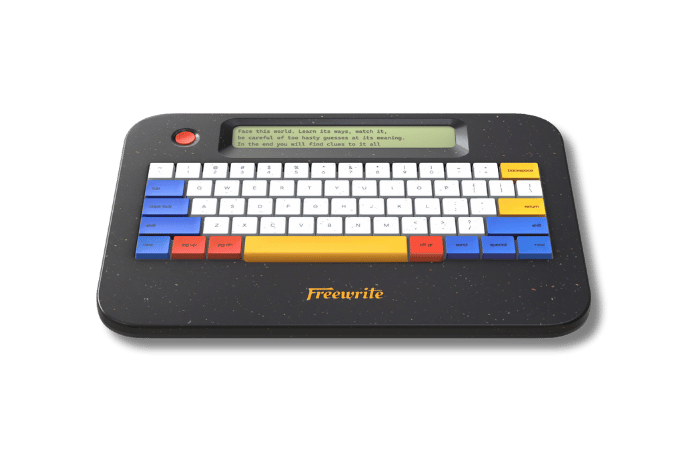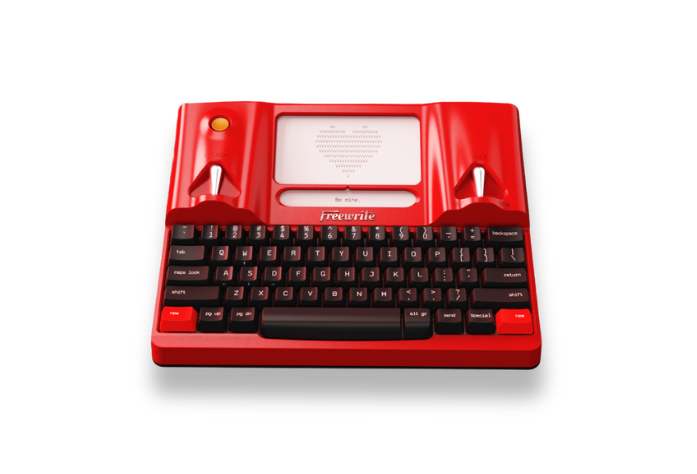NaNoWriMo, short for National Novel Writing Month, is an annual challenge where writers from all over the world aim to write 50,000 words in just 30 days. Sounds intense, right? But it’s not just about hitting a word count - it’s about pushing yourself to write, creating new habits, and maybe even finishing that novel you’ve been dreaming about. Whether you’re a seasoned writer or just starting, NaNoWriMo is all about embracing the creative process, letting go of perfection, and just getting words on the page. Let’s dive in and explore what this fun, challenging event is all about!
The History of NaNoWriMo: From 21 Writers to Global Movement
NaNoWriMo started as a small experiment and grew into a worldwide creative writing force, inspiring millions over its 26-year run. Its journey reflects the passion of writers and the power of community.
The Early Days: A San Francisco Spark
In July 1999, freelance writer Chris Baty launched NaNoWriMo in the San Francisco Bay Area with just 21 participants. The idea was simple: write a 50,000-word novel in one month, focusing on quantity over quality. Baty set basic rules, requiring a new novel and manual word count verification. In 2000, he moved the event to November, citing the dreary weather as perfect for staying indoors to write. That year, 140 writers signed up, including some from outside the U.S., and a basic website, built by a friend, went live. Baty created a Yahoo! group for participants to connect, and 29 completed the challenge, with Baty personally verifying their word counts.
Rapid Growth Through Media and Community
By 2001, NaNoWriMo exploded to 5,000 participants, driven by bloggers spreading the word and coverage in outlets like the Los Angeles Times and Washington Post. The website struggled to keep up, forcing a temporary honor system for winners, with 700 claiming victory. In 2002, NPR and CBS Evening News spotlighted the event, boosting sign-ups to 14,000. Technical upgrades, like automated word count verification, improved the experience. The 2003 event introduced the Municipal Liaison program, where volunteers led local meetups, moderated forums, and sent pep talk emails, strengthening community ties. That year, Baty also wrote his book No Plot? No Problem!, a NaNoWriMo guide, during the challenge.
Becoming a Nonprofit and Scaling Up
In 2006, NaNoWriMo became a 501(c)(3) nonprofit under the name The Office of Letters and Light, allowing it to accept donations and expand programs. Participation grew significantly, reaching over 400,000 writers by the mid-2010s across hundreds of regions worldwide. The website saw major updates, including a 2011 redesign from Drupal to Ruby on Rails, handling over 1,000,000 visitors in its first month, and another in 2019 to support growing traffic. In 2011, Baty stepped down as executive director to focus on writing, passing the role to Grant Faulkner. The nonprofit also launched initiatives like the Young Writers Program in 2004 and Camp NaNoWriMo in 2011, broadening its reach.
Challenges and Closure
By 2022, 413,295 writers participated, but NaNoWriMo faced hurdles. Controversies, including a 2022 sponsor backlash and a 2024 AI policy dispute, strained community trust. Forum moderation issues, including 2023 allegations of inadequate safety measures, led to a board investigation and forum closure. Financial struggles compounded these challenges. In March 2025, interim director Kilby Blades announced NaNoWriMo’s closure, effective April 2025, citing unsustainable finances and community disputes. Despite its end, NaNoWriMo’s legacy includes nearly 400 traditionally published novels and a vibrant global writing community.
How Does NaNoWriMo Work?
NaNoWriMo was built on clear rules and flexible options, making it easy for anyone to join the 30-day writing sprint. It prioritized getting words on the page, no matter the style or genre.
Participants registered on nanowrimo.org to track their progress and share novel details like titles or synopses. The challenge ran from November 1 at 12:00 a.m. to November 30 at 11:59:59 p.m., local time, with a goal of writing at least 50,000 words. Writers needed to average 1,667 words daily to hit the target. Before 2019, winners submitted manuscripts for word count verification; afterward, they entered their counts manually, earning digital badges and certificates. Sponsors, like CreateSpace from 2007 to 2015, offered prizes such as free paperback proofs. There was no entry fee, and the verification process protected privacy by not storing text.
Here’s how the challenge was structured:
-
Timeframe and Word Goal: Write 50,000 words in 30 days, either a complete novel or the first 50,000 words of a longer work.
-
New Work Only: Novels had to be written from scratch during November, though planning and notes were allowed beforehand.
-
Solo Effort: Co-authored novels weren’t permitted for the main challenge.
-
Creative Freedom: Any genre, theme, or language was allowed, including fanfiction, poetry novels, or metafiction. Non-novel projects, like scripts, counted as “rebel” entries.
-
Verification and Prizes: Winners verified their word count (pre-2019 via software, later self-reported) to receive badges, certificates, and sponsor discounts.
Why Participate in NaNoWriMo? Benefits for Writers
NaNoWriMo offered tools and a supportive community to help writers kickstart their novels and stay motivated. It was designed to make writing accessible and collaborative.
The challenge provided a clear 30-day deadline to produce a first draft, encouraging writers to focus on quantity for later revision. The website’s word count tracker and progress graphs helped monitor daily goals, while NaNo Prep resources, like worksheets, aided planning. Writers connected through forums to share tips, troubleshoot writer’s block, or chat about their projects. Municipal Liaisons hosted local events, such as write-ins and kickoff parties, fostering in-person bonds. The Young Writers Program gave students tailored tools and flexible goals. All features were free, funded by donations and sponsors like Amazon Literary Partnership.
Key benefits included:
-
Progress Tracking: Website tools logged daily word counts and displayed progress, with milestones to mark achievements.
-
Community Connection: Global forums and local meetups linked writers for advice, support, and camaraderie.
-
Motivational Structure: The 30-day deadline and 1,667-word daily target pushed writers to produce a draft quickly.
-
Free Resources: NaNo Prep worksheets and Young Writers Program materials were available at no cost.
-
Inclusivity: The challenge welcomed all genres and skill levels, with youth-focused options for students.
How to Get Started with NaNoWriMo: Sign Up and Prep
Joining NaNoWriMo was straightforward, with a clear process for signing up and preparing to tackle the 30-day writing challenge. Whether you were a first-time writer or a seasoned author, the platform offered tools and community support to help you hit the ground running.
Creating an Account and Joining the Challenge
To participate, writers visited nanowrimo.org starting in early October to create a free account. The sign-up process required basic details like an email address and username. Once registered, participants set up a profile on the website, where they could add their novel’s title, genre, and a short synopsis or excerpt. This profile served as a public hub to share progress and connect with other writers. For writers under 18, the Young Writers Program (YWP) at ywp.nanowrimo.org offered a separate sign-up process with youth-friendly features, including flexible word count goals ranging from a few thousand to 50,000 words or more. Registration was free, funded by donations and sponsors, ensuring accessibility for all.
Preparing Your Novel
Preparation was key to succeeding in NaNoWriMo’s fast-paced challenge. The website provided a section called NaNo Prep, which included free resources like downloadable worksheets, outlining templates, and guides for brainstorming characters, plots, and settings. Writers could start planning as early as they liked, researching historical details, sketching world-building elements, or drafting character backstories, as long as no actual prose was written before November 1. The rules allowed extensive notes and outlines, giving writers a head start without breaking the “new work only” requirement. Many participants used NaNo Prep to set daily word count targets, typically 1,667 words to reach the 50,000-word goal by November 30.
Connecting with the Community
NaNoWriMo’s community was a big part of the experience, and getting started meant plugging into it. After signing up, writers could join regional groups led by volunteer Municipal Liaisons, who organized local events like kickoff parties (often held the weekend before November) and write-ins where participants wrote together. These groups were accessible through the website’s regional forums, where writers could find nearby events or virtual meetups. Announcing your participation on your profile or in forums helped build connections with other “Wrimos” worldwide. The Young Writers Program also offered youth-specific forums for students to share ideas and get feedback, often moderated by educators or liaisons.
Setting Up Tools and Goals
The NaNoWriMo website provided a built-in word count tracker, where writers logged their daily progress and viewed graphs showing their advancement toward 50,000 words. Participants could write using any preferred tools and manually enter their word counts on the NaNoWriMo website. Setting a writing schedule was critical, with many aiming for consistent daily sessions to hit the 1,667-word average. Writers were encouraged to explore the site’s resources, like pep talk emails from published authors, to stay motivated. For young writers, the YWP included workbooks and progress-tracking tools tailored to classroom or individual use, often integrated into school curricula by registered educators.
Final Steps Before November
In the days leading up to November 1, writers finalized their plans and attended community events to build momentum. Kickoff parties, sometimes held on Halloween night past midnight, allowed writers to start typing in a group setting. Participants also tested their writing setup, ensuring their software or notebooks were ready. The website’s forums buzzed with pre-challenge discussions, where writers shared their novel ideas, sought advice, or formed writing groups. By preparing thoroughly, writers positioned themselves to focus on creativity when the clock struck midnight on November 1, ready to dive into the 30-day sprint.
Famous NaNoWriMo Novels: Books That Started as November Drafts
NaNoWriMo’s 50,000-word challenge produced hundreds of published novels, with nearly 400 released through traditional publishing houses and over 200 through small presses or self-publishing. These books, born from the November rush, span genres and have reached wide audiences, showing the challenge’s potential to spark lasting work.
Below are some notable novels that began as NaNoWriMo projects:
-
Water for Elephants by Sara Gruen: Published by Algonquin Books of Chapel Hill, this historical fiction novel follows a circus worker during the Great Depression. It became a bestseller and was adapted into a 2011 film.
-
The Night Circus by Erin Morgenstern: Published by Doubleday, this fantasy novel about a magical circus and rival magicians gained critical acclaim for its lush prose and intricate plot.
-
Wool by Hugh Howey: Published by Simon & Schuster, this dystopian sci-fi series started as a self-published novella and grew into a bestseller, praised for its post-apocalyptic world.
-
Cinder by Marissa Meyer: Published by Square Fish, this young adult sci-fi retelling of Cinderella launched a popular series, blending fairy tales with futuristic settings.
-
Fangirl by Rainbow Rowell: Published by St. Martin’s Press, this contemporary young adult novel about a shy college student and her fanfiction writing resonated with readers.
These novels highlight NaNoWriMo’s role in helping writers complete first drafts that, with revision, reached bookstore shelves. The challenge’s focus on quantity over quality gave authors the freedom to create raw material for later refinement.
How Freewrite Can Help Writers Succeed in NaNoWriMo
For writers tackling National Novel Writing Month (NaNoWriMo), staying focused and productive is critical to hitting that 50,000-word goal in 30 days.Freewrite’s distraction-free writing devices, designed by Astrohaus, are built to help writers enter a flow state, eliminate digital temptations, and draft faster. With E Ink or LCD screens that reduce eye strain, mechanical keyboards for comfortable typing, and cloud syncing to services like Google Drive, Dropbox, Evernote, and Postbox, Freewrite devices ensure your words are safe and accessible for later editing. The single-purpose design - no internet, no notifications, no apps - creates a serene writing environment, perfect for NaNoWriMo’s intense daily word counts (1,667 words on average). Writers report 2-3x more words per hour, making it easier to stay on track. Below, we explore five Freewrite devices to help you choose the right tool for your NaNoWriMo journey.

1. Smart Typewriter
The Smart Typewriter is a focused, distraction-free writing device designed to help you immerse yourself fully in your writing without the interruptions of emails, notifications, or social media. Featuring an E Ink display with a frontlight, it allows for easy reading day or night. The mechanical keyboard, with durable Kailh Box Brown switches, offers a satisfying tactile feel for long writing sessions. With cloud syncing and long-lasting battery life, it’s perfect for writers who want to focus purely on drafting without distractions.
Main Benefits:
-
E Ink display with frontlight for readability day or night
-
Full-size mechanical keyboard with durable Kailh Box Brown switches
-
Cloud syncing for seamless backup and access across devices
-
Long-lasting battery to keep writing without interruption
-
Distraction-free platform designed for writing flow

2. Traveler
The Traveler is a portable, distraction-free drafting device designed for writers on the go. Weighing only 1.6 pounds and featuring a compact E Ink display, it’s perfect for writers who need to write anywhere. Its full-size scissor-switch keyboard offers a smooth typing experience, and the display is easy on the eyes, ensuring comfort during long writing sessions. With cloud syncing and long-lasting battery life, you can draft your novel, journal, or essays without worrying about distractions or losing your progress.
Main Benefits:
-
Lightweight and portable, perfect for travel
-
E Ink display that is glare-free and easy to read in sunlight
-
Full-size scissor-switch keyboard for smooth, comfortable typing
-
Automatic cloud syncing for easy document backup and access
-
Long-lasting battery for up to 4 weeks with regular use

3. Alpha Raven Black with Backlight
The Alpha Raven Black is a highly portable, distraction-free writing device designed to help you stay in the zone and focus on your writing. Weighing just 1.6 lbs, it’s perfect for writers who need a lightweight device they can take anywhere. The built-in backlight allows you to write day or night, with adjustable brightness to suit your environment. With a mechanical keyboard and 100-hour battery life, the Alpha provides everything you need to draft without interruptions, whether you're at home or on the go.
Main Benefits:
-
Ultra-portable and lightweight, easy to carry anywhere
-
Built-in backlight with five brightness levels for writing day or night
-
Kailh Choc V2 low-profile keyboard for comfortable typing
-
100-hour battery life, so you can write for long periods without recharging
-
Automatic cloud syncing for easy backup and access from multiple devices
Conclusion
National Novel Writing Month, or NaNoWriMo, was a transformative force for writers worldwide, inspiring over 400,000 participants at its peak to draft 50,000-word novels in just 30 days. From its humble start in 1999 with 21 writers in San Francisco to a global nonprofit, NaNoWriMo offered tools like word count trackers, NaNo Prep resources, and a vibrant community through forums and local events. Its Young Writers Program empowered students, while successes like Water for Elephants and The Night Circus showed its potential to launch careers. Despite its closure in April 2025 due to financial and community challenges, NaNoWriMo’s legacy lives on in the millions of words written and the communities it built. Writers can still draw inspiration from its model, using distraction-free tools like Freewrite devices to pursue their own month-long challenges or join other writing groups to keep the spirit of collaborative creativity alive.
Frequently Asked Questions
What was the goal of NaNoWriMo?
NaNoWriMo challenged participants to write a 50,000-word manuscript, either a complete novel or the first 50,000 words of a longer work, between November 1 and November 30. Writers aimed to average 1,667 words daily to meet the goal, focusing on quantity to produce a first draft for later revision.
Could anyone participate in NaNoWriMo, and was it free?
Yes, NaNoWriMo was open to anyone, regardless of age, experience, or location, with no entry fee. Writers registered for free on nanowrimo.org, and those under 18 could join the Young Writers Program at ywp.nanowrimo.org, which offered flexible word count goals. Funding came from donations and sponsors.
What happened to NaNoWriMo after its closure in 2025?
NaNoWriMo shut down in April 2025 due to financial struggles and community disputes, including controversies over AI policies and forum moderation. The website and forums are no longer active, but writers can explore archived resources via the Wayback Machine or join alternative writing communities like local writing groups or online platforms.
How did NaNoWriMo support writers during the challenge?
NaNoWriMo provided free tools like word count trackers, progress graphs, and NaNo Prep worksheets for planning. Writers connected through global forums, local meetups organized by Municipal Liaisons, and events like write-ins. Pep talk emails from authors and a supportive “Wrimo” community helped maintain motivation throughout November.

